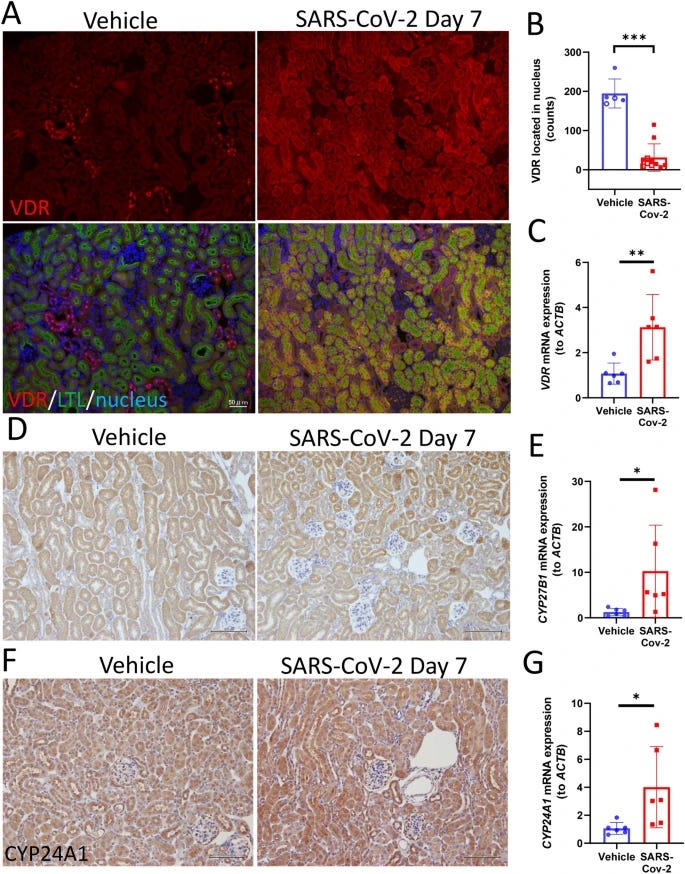First an addendum. Google has been working hard on its Language Models, after all, the current leading architecture (Transformer) is a literal creation from Google. And one of its coolest additions is the fact that you can generate short (10 to 20 minutes) podcast episodes fully voiced by AI.
Bear in mind that no amount of RAG (retrieving contextually important information you feed the AI) will surpass the limits of the models themselves. So the AI podcast is mostly a layperson-friendly summarization of anything, in this case, my own articles. I want you to listen to it, and give your feedback in the comments. You can also play with it by yourself, and be very conscious of the shortcomings of current AI. You will also be a hostage for the “training” (guardrails) the companies insert in the models.
Some days, the hidden cosmic forces that rule over us all align, and papers are published in sequence which shifts my publishing schedule. Or sometimes I feel like writing something else, which structures the articles better, after all, I am building a singular hypothesis here. Today is such a case. And today’s article will be a mix of essay and science, which is favored by many readers.
For over 2 years at this point, and mentioned throughout my Substack quite a few times, I have been pondering and proposing that, somehow, in some yet-to-be uncovered pathway to science, Vitamin D metabolism is being disrupted, globally. It is the easiest, and one of the most plausible explanations to explain many “oddities” surrounding the numerous Covid effects and disease outbreak shifts, and some days, the stars align.
After a couple of hours of tinkering with the outputs, here is a satisfactory AI-podcast of the subjects covered here.
SARS-CoV-2 infection causes a decline in renal megalin expression and affects vitamin D metabolism in the kidney of K18-hACE2 mice
Patients with coronavirus disease 2019 (COVID-19) often experience acute kidney injury, linked to disease severity or mortality, along with renal tubular dysfunction and megalin loss in proximal tubules. Megalin plays a crucial role in kidney vitamin D metabolism. However, the impact of megalin loss on vitamin D metabolism during COVID-19 is unclear. This study investigated whether severe acute respiratory syndrome coronavirus 2 (SARS-CoV-2) infection reduces megalin expression in proximal tubules and its subsequent effect on vitamin D metabolism in mice expressing human angiotensin converting enzyme 2 (K18-hACE2 mice). Histological and immunohistochemical staining analyses revealed glomerular and capillary congestion, and elevated renal neutrophil gelatinase-associated lipocalin levels, indicative of acute kidney injury in K18-hACE2 mice. In SARS-CoV-2-infected mice, immunohistochemical staining revealed suppressed megalin protein levels. Decreased vitamin D receptor (VDR) localization in the nucleus and increased mRNA expression of VDR, CYP27B1, and CYP24A1 were observed by quantitative PCR in SARS-CoV-2-infected mice. Serum vitamin D levels remained similar in infected and vehicle-treated mice, but an increase in tumor necrosis factor-alpha and a decrease in IL-4 mRNA expression were observed in the kidneys of the SARS-CoV-2 group. These findings suggest that megalin loss in SARS-CoV-2 infection may impact the local role of vitamin D in kidney immunomodulation, even when blood vitamin D levels remain unchanged.
To study the effects of SARS-CoV-2 infection in the kidneys, the authors used “humanized mice” as a common model. The kidney of the infected mice was pale, meaning compromised blood flow (renal congestion), microscopic analysis of the tissue showed glomerular and capillary (both are very small networks of blood vessels in the kidneys) congestion. Staining the tissue showed fibrosis and bleeding inside the renal cortex.
An increase in Acute Kidney Injury marker Neutrophil Gelatinase-associated Lipocalin (NGAL) was observed on day 2 and it was maintained until day 2, but with a trend downwards after day 2. Another marker for injury KIM-1 (Kidney Injury Molecule-1) also increased on day two, but it wasn’t a large increase. γH2AX, a marker for DNA injury and mitochondrial damage/dysfunction, was increased. All this means the injury to the kidneys in mediated by disruption of renal circulation.
Interestingly enough, SARS-CoV-2 RNA was detected in the lungs, but not the kidneys, but Spike Protein was detected in the renal cortex (the outer layer of the kidneys). I wish the authors found a way to sequence the Spike Protein, because I have a feeling I know the exact parts it would be there. Do not fret, SARS-CoV-2 got you covered on ways to fuck up the kidneys without the Spike (more on this after this paper).
Next, the authors looked into Megalin, a large protein that is located on the surface of the cells in the proximal tubules of the kidneys, responsible for filtering blood, and reabsorbing important nutrients and whatever else you need (so you don’t pee away all you consume), and one such thing is Vitamin D.
They found that megalin levels dropped significantly seven days after infection, which will impact how the body reabsorbs and metabolizes certain substances, including Vitamin D activation. Interestingly, while megalin protein levels dropped, the researchers observed an increase in the mRNA that codes for megalin, this points towards a compensatory response from the body to attempt to achieve equilibrium and points toward a deeper problem.
In mice infected with Covid, the nuclear localization of the Vitamin D Receptor (VDR, the most important activator factor for Vit D) was significantly reduced, but the VDR mRNA levels (were a way for the body to produce more of the receptor). The protein levels of CYP27B1 and CYP24A1 were similar to the controls, but its mRNA levels were increased. Both enzymes are crucial for Vitamin D metabolism.
The first (B1) activates Vitamin D by converting it to its active form, and the second (A1) deactivates it by breaking it down. In simpler terms, the body is increasing the mRNA production of certain enzymes and proteins, to compensate for the “damage” and lack of said mRNA end-products in the kidney. Paradoxically, the systemic levels of Vitamin D remained unchanged, but the levels in the kidneys were lower.
Less Vitamin D around the kidney will inevitably influence the immune system and inflammation and that is exactly what was found. Higher levels of Tumor Necrosis Factor Alpha (TNF-α) were increased. Interleukin-4, an anti-inflammatory cytokine, decreased, although Interleukin-10, another anti-inflammatory, but sometimes paradoxical cytokine, increased. The body is attempting to compensate for the inflammation and loss of IL-4, by increasing IL-10.
AKI in patients with COVID-19 has been reported to be associated with in-hospital mortality2,11, intensive care unit admission rate10, and mechanical ventilation rate34, whereas the mechanisms underlying CoV-AKI have not been clarified. In hACE2-Tg mice, SARS-CoV-2 infection caused glomerular and capillary congestion and bleeding in the interstitial region. SARS-CoV-2 infection induces vasoconstriction and a state of hypercoagulability, which lead to the formation of microthrombi and renal microvasculature injury, causing acute kidney injury9,35. Additionally, NGAL and Kim-1 expression was elevated on day two in infected mice. DNA injury and cell cycle arrest were also observed in SARS-CoV-2-infected mice. These results show that SARS-CoV-2 infection causes AKI in hACE2-Tg mice by impairing the microcirculation. Furthermore, we evaluated the possibility of a direct viral infection. However, no SARS-CoV-2 mRNA was detected in the infected kidneys, suggesting that the main cause of AKI is not direct viral infection in the kidneys of infected mice. One of the limitations of the present study is that, because we used only one dose of the virus, we cannot exclude the possibility of higher-dose viral infection in the kidney. Researchers have reported that viral RNA can be detected in the kidneys and urine of patients with severe COVID-1929,36.
And here we have it, in their own words. Kidney injury and especially a lower degree of kidney damage is widely observed in both severe (injury), and acute (damage) Covid cases, and the proposed mechanism here is… Micro clots. This entire paper is remarkable because the analysis also takes into account the potential compensatory mechanisms the body uses to control inflammation and bypass or compensate for the “microstructural” damage.
The (cognitive declining) brain of many will primarily and already focus on the words “Spike Protein” and ignore basically everything else, after all, confirmation bias is the drug of the day. So let us expand a little. Actually, let us expand a lot.
SARS-CoV-2 ORF3a induces COVID-19-associated kidney injury through HMGB1-mediated cytokine production
SARS-CoV-2 ORF3a is known as a “virulence factor”, it has significant, deep impacts on cells, tissues, and basically everything “it touches”. And in the paper above the findings are straight towards.
ORF3a drives inflammation and cell death in the cells in our kidneys, it increases KIM-1, increases IL-6, and TNFα, which is in line with the current evidence, but the most remarkable finding here is not only the driving force behind this inflammation and damage, but which protein also interacts with ORF3a. Our good old friend HMGB1. An AI-made podcast of one of my articles about it is below.
If you think the AI got it wrong about linking HMGB1 and ORF3a without any context from me, it didn’t, it is hidden (hehe) in its training data.
There is another paper, which I will cover separately, that goes into the changes in many biomarkers for mild Covid, for months, with an absurd amount of samples, and hidden in the data, there has been a trend toward recovery of the kidney function after 4 to 6 months. And this is something you will start to read in many, many papers. The recovery trend of “mild” Covid in your cells, and organs is X months.
Before going into why I decided to cover both papers and remind you of HMGB1 today, I need to go on a tangent. Many moons ago, in my past life, I created my own analytical framework (You can get a vague idea of how it looks by searching for The Nova Swan on Substack or even Google) and part of my forecasting framework had I concept I came up with, different from its original meaning.
Syntatic/Linguistic convergence. You can treat linguistic convergence as a form of network analysis, where words and phrases represent nodes, and their increasing proximity or frequency in different contexts represents edges between them. Over time, the density of these connections can be measured using algorithms similar to those in graph theory or signal processing. This provides a statistical foundation for predicting outcomes based on the intensity and direction of these convergences. Some math is involved.
This is exactly how and precisely why I picked up the IgG4 immunological shift in vaccinated individuals over half a year before anyone else, including 3 groups of researchers (which found, separately, this shift, but 2 of the groups missed it). Many other forecasts are initially made like this.
New Covid XEC symptom 'severely impacts daily functioning' warns doctor
Dr Snieguole Geige from the 'It’s Me and You Clinic' revealed that "insistent and persistent fatigue" is the most frequently observed symptom. She said: "From my clinical perspective, the most common symptom we're observing is an intense and persistent fatigue that seems to linger longer than with previous variants.
On the subject of the most serious symptom, however, Dr Geige explained: "The most serious symptom is the potential for sudden, acute respiratory failure in individuals who may have previously only experienced mild to moderate symptoms."
She described XEC as "particularly dangerous" because "patients can deteriorate quickly", reports Surrey Live. Another factor contributing to XEC's spread is its "unpredictable trajectory". Dr Geige explained: "Someone can appear to be recovering and suddenly face a rapid decline, often due to microvascular complications in the lungs, leading to severe oxygen deprivation."
The new, about to become globally dominant, Covid variant has a myriad of mutations, it is more immune evasive than the last one, it is a tad bit more virulent, thus it follows each and every other Omicron trend. And this is where my unorthodox analysis comes in.
For the past 4 weeks, I have been picking exactly this linguistic convergence, not only on social media, but in scientific publications. “micro alterations”, “microstructure”, “microvasculature”, and “microcirculation”, are all compromised.
Unless severely physiologically compromised, and frail, microclotting will not kill you, most people will never realize they had it in the first place, but the damage is being done. Changes in microvasculature and capillaries are the perfect, and scientifically accurate definition of “Death by a 1000 cuts”. All mediated by my favorite protein, HMGB1. The measures to minimize and limit damage are in my last article.
Aspirin, Activated Charcoal
Serrapetase, if you wish Nattokinase
Antioxidants of your choice
Zinc, Selenium, and Copper at very high dosages for a few days
Activated Charcoal is quite literally one of the most abundant “supplements” there is, you can buy a pound for a couple of bucks (at least here in Brazil). You should seriously consider adding whenever you get sick with anything, just be extremely mindful of timing. AC will bind to literally everything, and this includes the “good stuff”, including supplements. 4 hours is usually enough to avoid it grabbing the wrong things. AC binds to a lot, including LPS and other toxins.
AC to adsorb 18 different cytokines and HMGB1, and to clarify the adsorption mechanisms. The 18 cytokines included IL-1β, IL-1ra, IL-4, IL-6, IL-8, IL-10, IL-12, granulocyte colony-stimulating factor (G-CSF), interferon-γ (IFN-γ), interferon-inducible protein-10 (IP-10), monocyte chemotactic protein-1 (MCP-1), macrophage inflammatory protein-1α (MIP-1α), macrophage inflammatory protein-1β (MIP-1β), platelet-derived growth factor (PDGF), TNF-α, vascular endothelial cell growth factor (VEGF), basic fibroblast growth factor (basic FGF), and regulated on activation normal T-cell expressed and secreted (RANTES).
All the subjects here will tie well with the coming ones, coming trends and all else. See you in the next one.
I am grateful for the support and for you reading my Substack. You can buy me a Kofi whenever you feel like too.








Write your feedback on the AI-generated short podcast as a reply to this specific comment, please. Feedback on this is important, so gauge if I should keep doing it to everyone, or just to myself and a close friend.
Sitting with it i find it disturbing. We cant trust anything. Even citations may be faked. Or the science itself uses AI to generate papers. Moriarty, John Paul, something Pham can also be just an AI generated persona. This technology leads us to authority. And they know it, which is exemplified in how policy is created to support this paradigm ( mis dis mal information). While the technology is exciting and novel the impacts to humanity are profound to consider. What utility does human life have? Ww know in the west how much more advantageous it is to use automation. Consider what a big excavator can do at a fraction of the costs. Having children its troubling and thinking about how to prepare them i can only think that spiritual capacity is nevessary